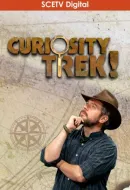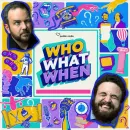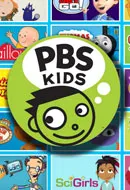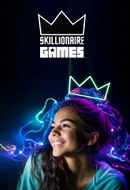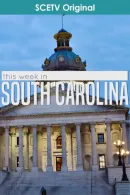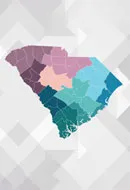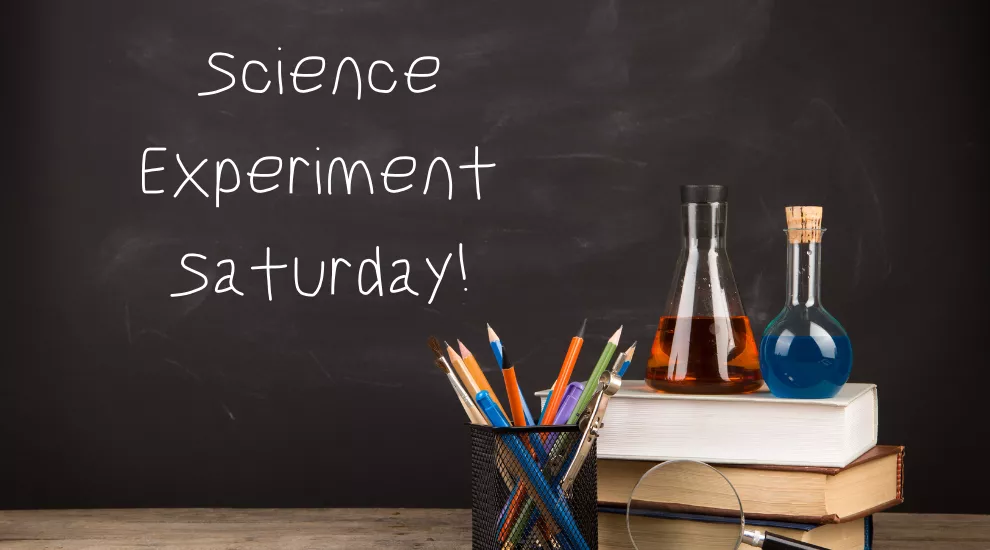
1. Creating Bubbles
This fun experiment shows kids how to create bubbles!
What you need:
1. Rubber bands
2. Wash Cloth
3. Dish Soap
4. A bowl of water
5. Empty water bottle
6. Scissors
7. Measuring Spoon
8. Regular Spoon
Steps:
1. Cut off the bottom of the empty water bottle.
2. Mix dish soap with the bowl of water, using the measuring spoon. (Make sure all dish soap is dissolved into the water).
3. Use washcloth and cover bottom part of bottle and secure it with the rubber band.
4. Once secured, dip the bottom part into the detergent and then blow into the water bottle to create bubbles.
For more information on this experiment, click here.
2. Glitter Germ Experiment
With the recent pandemic, it is important to teach kids why it's important to keep up with hygiene practices, like handwashing. This experiment shows kids how handwashing prevents germs.
What you need:
1. A shallow dish
2. Water
3. Blue Dish Soap
4. Glitter
Steps:
1. Pour water into the shallow dish.
2. Sprinkle glitter on the surface of the water.
3. Squirt the soap directly into the glitter that is floating on top of the water.
4. Notice how the glitter quickly moves away from the soap.
For more information on this experiment, click here.
3. Water Cycle in a BAg
With this experiment, kids can observe the three basic processes of the water cycle take place.
What you need:
1. A plastic bag
2. Water
3. Blue food coloring
4. A permanent marker
5. Packing tape
6. A sunny window or a hairdryer
Steps:
1. Draw a model of the water cycle on the outside of the plastic bag.
2. Pour in 1/4 a cups of water.
3. Add a few drops of blue food coloring to the water and seal it shut, using tape.
4. Tape the bag to a sunny window along the top of the bag.
5. If it is not a dunny day, hold the hairdryer to the bag and move it around the bag. Don't hold it too close!
6. Observe how the water evaporates due to the heat from the sun or hairdryer. Notice how once you take away the heat, the vapor cooled and changed back into a liquid state (almost like a cloud). Then, once the water was condensed, the air could not hold it anymore so it fell down in the form of precipitation.
For more information on this experiment, click here.
4. Erupting Apples
In this experiment, kids will learn a little about chemical reactions and how vinegar reacts with the baking soda and produces the eruption, causing fizzy bubbles.
What you need:
1. Baking soda
2. Vinegar
3. Water
4. Liquid soap
5. Bowl(s)
6. Tray
7. Squeeze bottle
8. Pipette
9. Liquid watercolor
Steps:
1. Add 1 cup of baking soda, 1 tablespoon of soap, and 1 teaspoon of water into the small bowl.
2. Mix the items in the bowl with your hands.
3. Add a teaspoon of liquid watercolor to the mix to create a colored apple.
4. Mix the ingredients until you can form them into a ball. If it's crumbly, add more water. If it's too mushy, add more baking soda. Once formed into a ball, add a leaf, if you want to really make it look like an apple.
5. Place the apple into the middle of the bowl and fill the squeeze bottle with about a cup of vinegar.
6. Things will get messy in the next step, so make sure to have the tray underneath the bowl(s) to catch anything that ends up overflowing.
7. Using the pipette, squirt some vinegar onto the apple and watch as it erupts!
For more information on this experiment, click here.
5. gummy bear science project
This experiment explores osmosis, which is the movement of water through a barrier. In this experiment, the barrier will be the gummy bears. Note: This experiment will take 12-48 hours.
What you need:
1. Gummy Bears
2. Water
3. Salt
4. Sugar
5. (3) Bowls
6. (optional) Food Scale
Steps:
1. Heat 1 cup of water over the stove or use 1 cup of room temperature water.
2. Slowly add salt to the water and stir. Continue to add salt until it does not dissolve anymore.
3. Pour the salt solution into one of the bowls and let the mixture come to room temperature. Repeat steps 1 and 2 with the sugar, using another bowl. Fill the last bowl with normal water. You should have three different bowls, with different solutions (salt, sugar, and water).
4. Take a few gummy bears and place them in each bowl. Let them sit for 12-48 hours. Make a hypothesis on how you think the bears will react to each solution.
5. Observe the bears after 48 hours. What happened? Did their colors change? How has each solution reacted differently to the gummy bears? If you have a food scale, weigh the bears from each solution and compare their sizes.
For more information on this experiment, click here.
6. Baking Soda- Powered Boat
This experiment teaches kids about chemical reactions. Mixing baking soda and vinegar will give off a chemical-reactions that creates carbon dioxide, powering the boat. The gas flying out of the boat, pushes the boat forwards. This is the same concept for airplane jet engines.
What you need:
1. Plastic bottle
2. Baking soda
3. Vinegar
4. Straw
5. Scissors
6. Hot glue gun or packing tape
7. Bathtub or tub of water
Steps:
1. Carefully with a parents help, cut a small hole in the bottom of the bottle.
2. Cut a piece of the straw and poke it through the hole and seal the hole around the straw with a hot glue gun or packing tape. (You want the only path out of the bottle to be through the straw without any leaks).
3. Hold the bottle close and pour in some vinegar, making sure that you have the bottle turned on its side, so the vinegar does not leak out of the bottle.
4. With the bottle still leveled, spoon in some baking soda. Make sure to hold the bottle steady so the baking soda does not get to the vinegar.
5. Screw the bottle cap back on and carefully tip the bottle to combine the vinegar and baking soda. Immediately place it into the bathtub or tub of water, making sure the straw is under the water.
6. Watch as the water bottle goes around the water! Notice how the gases are leaving the bottle through the straw, making the boat move.
For more information on this experiment, click here.
7. Milk Swirl Experiment
In this experiment, kids will see how dish soap interacts with oil. In the end, they will see an explosion of colors in the milk.
What you need:
1. Whole milk
2. Food coloring
3. Dish soap
4. Cotton swabs
5. Jars
6. Plate or bowl
Steps:
1. Pour some milk into the plate or bowl
2. Squeeze a few drops of food coloring into the center of the milk. (One drop per color is good enough). Make sure to add different colors, to get the full effect!
3. Squeeze some dish soap into the jar and then dip one end of the cotton swab into the liquid.
4. Touch the swab with the dishwashing liquid to the center of the milk.
5. Observe how the colors separate across the bowl, creating an explosion.
For more information on this experiment, click here.
8. Salt dough Dinosaur
In this experiment, kids will see how dish soap interacts with oil. In the end, they will see an explosion of colors in the milk.
What you need:
1. Flour
2. Salt
3. Water
4. Plastic dinosaurs/other small toys
5. Food coloring
6. Mixing bowl
7. Cutting board
8. Rolling pins
9. Cookie cutters/glass cup
10. Oven
Steps:
1. Mix 2 cups of flour and 1 cup of salt in a mixing bowl.
2. Add 1 cup of water and stir until you have a dough-like consistency.
3. Add in food coloring to make a greenish water so that the dough looks brown. (Several drops of red, yellow, and blue.)
4. Form the dough into a ball and dust it with flour. Knead the dough for 5 minutes.
5. Roll the dough to about 1/2 inch to 1/4 inch.
6. Cut circles into the dough using the cookie cutter or a glass.
7. Press the dinosaurs or other small toys into the dough. Then, carefully remove them and let the dinosaur fossils airdry. You can also choose to bake them in the oven at 200 degrees for 2 1/2 hours.
For more information on this experiment, click here.
9. Dancing Sprinkles
In this experiment, kids will learn about sound waves and vibrations. As the different tones in the music changes, the vibrations will change, causing the sprinkles to dance.
What you need:
1. Sandwich bag
2. Wireless speaker
3. Bowl or vase (large enough to hold speaker)
4. Device connected to the speaker (phone, laptop, etc.)
5. Sprinkles
6. Plastic wrap
Steps:
1. Turn on the speaker and place it into the bowl or vase.
2. Stretch the plastic wrap over the bowl or vase that securing the speaker. Try to make it as right as possible with no wrinkles.
3. Pour sprinkles into the sandwich bag, seal the bag, leaving a large pocket of air for the sprinkles.
4. Place the bag on top of the plastic wrap.
5. Play different music and watch as the sprinkles dance to the rhythm of the song, Play around with different songs and volumes.
For more information on this experiment, click here.
10. lung science experiment
This experiment demonstrates to kids how the human respiratory systems works. Kids will learn how our lungs work to keep us alive everyday. They will also see the difference between a "healthy" lung and a lung affected by smoking.
What you need:
1. Duct tape
2. 2 Straws
3. 1 Liter clear plastic bottle
4. 4 Balloons
5. Clay/Play-Doh
Steps:
1. Cut the bottom off one of the clear plastic bottles.
2. For the healthy lung, tape the end of one balloon tightly around a straw and make sure there are no air leaks.
3. For the lung affected by smoking, you will need to put a balloon inside of another balloon and duct tape it to a straw.
4. Once the two straws are inserted with the attached "lung", take a small amount of clay and connect the straws to the opening of the bottle. (Make sure to seal them tightly so that there are not any holes).
5. To mimic the "unhealthy lung", push some clay down inside of the bottle to create a blockage that smoking usually calls.
6. Cut the bottom off the balloon, tie it off, and wrap the end you cut around the bottom opening of the bottle.
7. Add a final layer of duct tape around the edges to help hold the balloon in place.
8. Tug on bottom balloon and notice that the suction created inside the bottle will most likely help the healthy lung to inflate more easily than the "unhealthy lung".
For more information on this experiment, click here.
